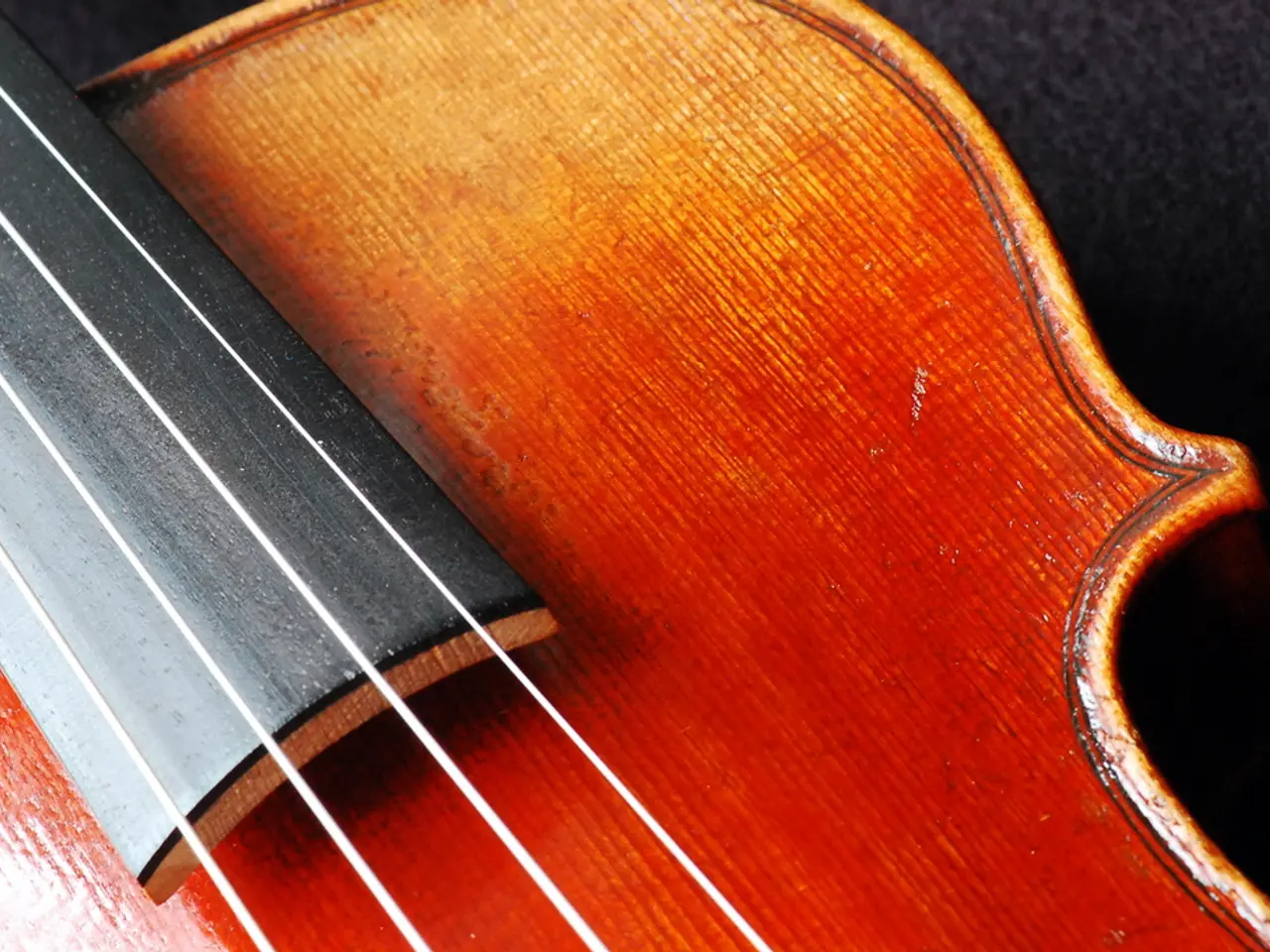Exploring the Various Components of the Guitar - Delving into the Distinct Elements that Make up a Guitar
In the world of music, two popular instruments stand out - the acoustic guitar and the electric guitar. While they may seem similar, these instruments have unique components that set them apart. Here's a breakdown of the essential parts of both acoustic and electric guitars.
Acoustic Guitars:
1. The bridge anchors the strings and transmits their vibrations to the guitar's top (soundboard), playing a key role in tone and intonation. 2. Bridge pins are small pegs used to secure the strings into the bridge. 3. The fretboard is the flat surface on the front of the neck where strings are pressed to form notes and chords. 4. Tuning pegs, also known as tuners or machine heads, are knobs used to tighten or loosen guitar strings. 5. The nut is a small piece located where the headstock meets the neck, guiding strings from the tuners to the fretboard. 6. The soundhole is the circular hole located in the center of the body, allowing the sound produced by string vibrations to resonate within the hollow body and project outward.
Knowing the parts of the acoustic guitar helps you play better, tune, maintain, and make music with your guitar confidently.
Electric Guitars:
1. The pickups are magnetic coils mounted on the body under the strings, detecting the vibrations of the strings and converting them into electrical signals. These are essential for amplification and tonal variation. 2. Control knobs (Volume and Tone knobs) allow the player to adjust the output level and tone shaping directly on the guitar. 3. The pickup selector switch allows you to choose which pickup (or combination of pickups) is active in electric guitars. 4. Many electric guitars have a tremolo system, which is a mechanical device that can change string tension to create vibrato effects. 5. Electric guitars are often built with a solid body instead of the hollow body typical of acoustic guitars, enhancing sustain and feedback control. 6. Electric guitars contain internal cavities routed to house the electronics, such as pots, switches, and wiring, which are not present in acoustic guitars.
The unique parts found on electric guitars that are not present on acoustic guitars mainly revolve around the electronics and hardware needed to amplify and shape the sound electronically.
In standard tuning, the six strings from thickest to thinnest are: E (low), A, D, G, B, and E (high). A helpful way to remember the order is by using the phrase "Eddie Ate Dynamite, Good Bye Eddie."
The neck is the long, slender section that extends from the headstock to the guitar's body, supporting the fretboard. The input jack is where you plug in your guitar cable in electric guitars. The saddle is a small strip that sits in the bridge. The strings rest on the saddle, which sets the action (string height) and affects intonation.
Understanding the parts of your guitar, whether acoustic or electric, is crucial for playing, tuning, maintaining, and making music confidently. Whether you're strumming an acoustic or rocking an electric, knowing your instrument inside out will elevate your playing experience.
[1] https://www.musicradar.com/news/guitars/electric-guitar-vs-acoustic-guitar-what-are-the-differences-1043781 [2] https://www.guitarworld.com/lessons/the-differences-between-acoustic-and-electric-guitars [3] https://www.musicteacherworldwide.com/articles/the-differences-between-acoustic-and-electric-guitars [4] https://www.thomann.de/gb/guitar_parts_electric_vs_acoustic.htm
- In the realm of music, two popular instruments stand out - the acoustic guitar and the electric guitar, each with unique components that set them apart.
- For those interested in music and art, learning to play the guitar can be an exciting journey, with online classes and a wealth of resources available for support.
- Mastering the essential parts of both acoustic and electric guitars, including the bridge, fretboard, tuning pegs, nut, soundhole, pickups, control knobs, pickup selector switch, and saddle, can greatly enhance your playing experience.
- A blog about music could delve into the differences between acoustic and electric guitars, guiding fans of entertainment to make informed decisions when choosing their next instrument.
- Embracing the world of art and entertainment, whether through an acoustic or electric guitar, requires a good understanding of your instrument, allowing you to play, tune, maintain, and make music confidently.
[1] Explore more about electric and acoustic guitars at: [2, 3, 4]








